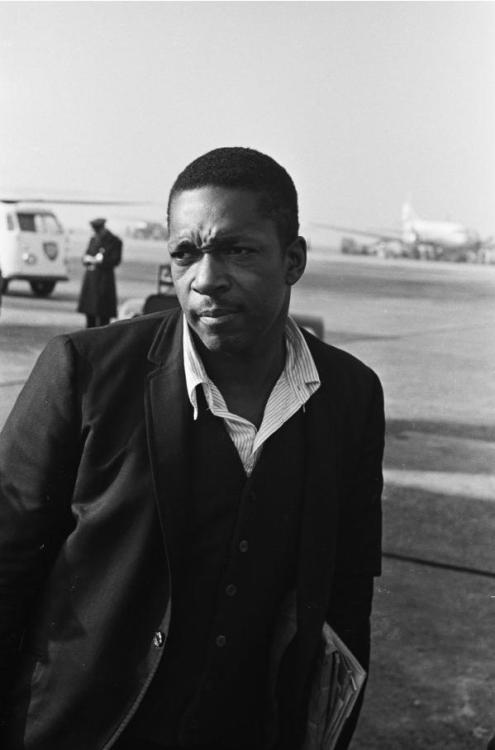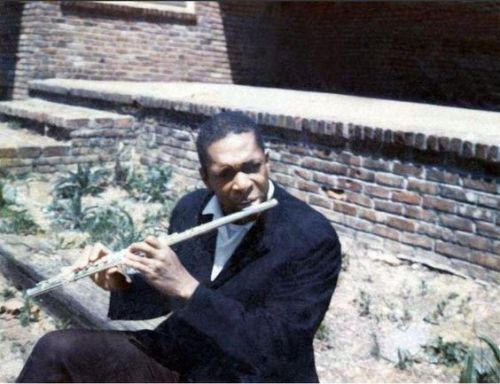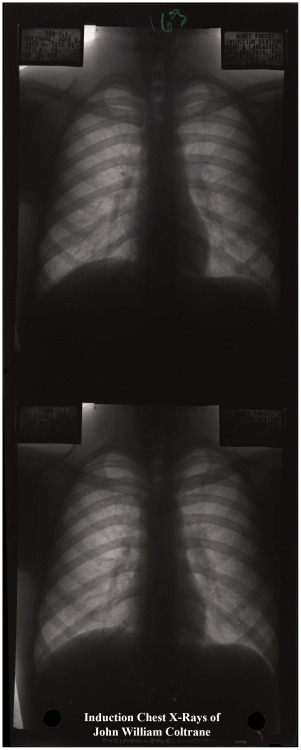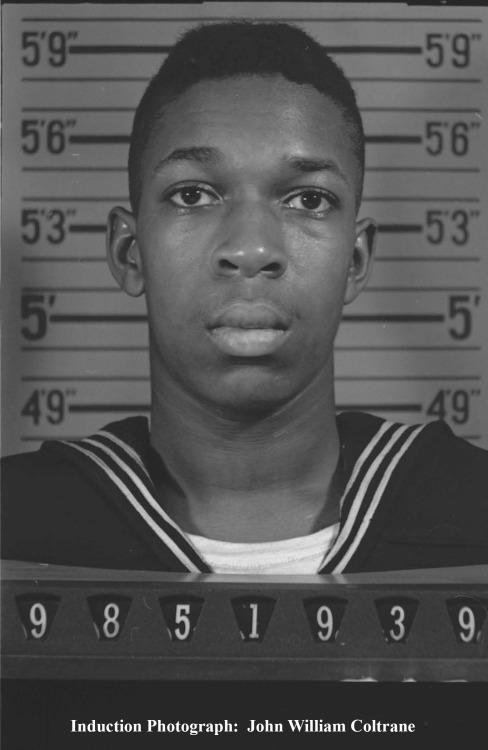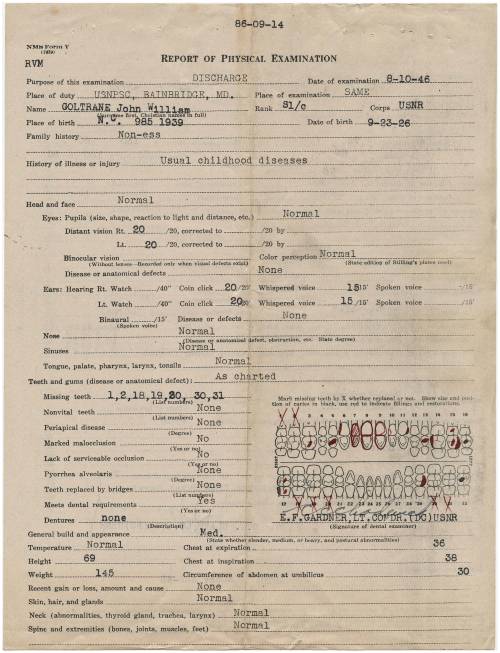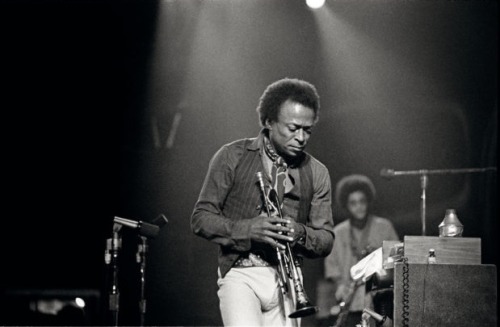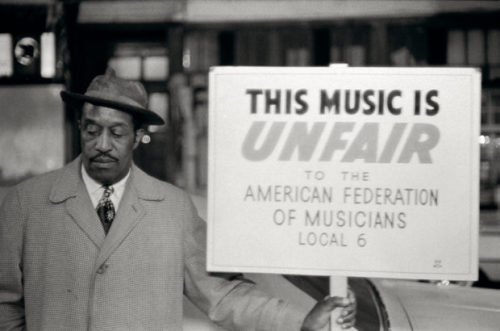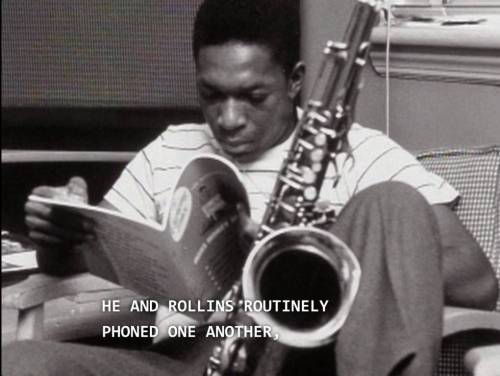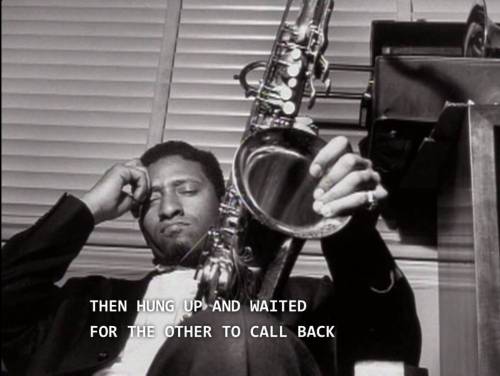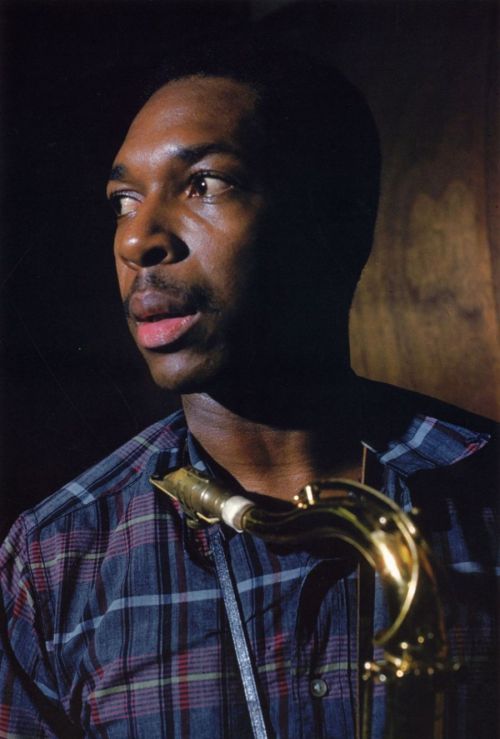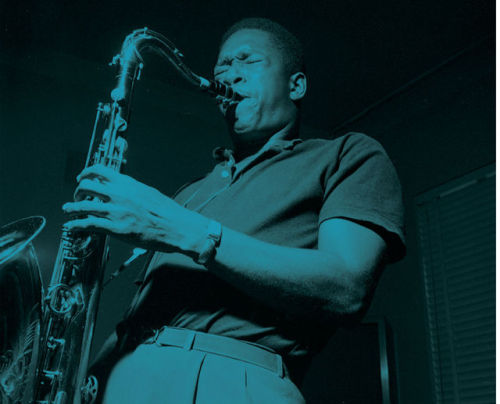#john coltrane
PEP (Person of Exceptional Prominence) Spot Light:
John Coltrane (September 23, 1926 – July 17, 1967)Legendary jazz performer and inductee to the Jazz Hall of Fame, John Coltrane is one of the most dominant figures that has influenced generations of jazz musicians. Prior to his association with musical greats like Dizzy Gillespie, Johnny Hodges, and Earl Bostic, John Coltrane entered military service in 1945 and played in the Navy jazz band while stationed in Hawaii.
When Coltrane entered military service, all personnel were required to have a chest x-ray as part of their induction requirements. Within John Coltrane’s record, one such x-ray exists. As the reformatting staff of the Preservation Programs at St. Louis scanned his military record for public use, his x-ray was scanned also. There are several preservation reasons why x-rays are scanned. First, the x-ray is part of Coltrane’s file, and thus an integral part of his historical record which is available to the public. Secondly, providing a scanned image eliminates the need for a user to wear clean gloves so no oils from their hands would transfer onto the silver emulsion of the x-ray. Secondly, the base that the x-ray film is on is acetate film (a.k.a Safety Film) which decomposes over time letting off gases that smell like vinegar hence, the commonly used term “vinegar syndrome”. Vinegar Syndrome occurs when acetic acid is released from the acetate based film leading to the vinegar smell. This deterioration makes the plastic film base brittle, buckle, shrink, and liquefy. Keeping the film in a controlled environment helps reduce the continuation of the base’s degradation. Lastly, the x-ray can be scratched easily if not handled appropriately.
On occasion, the x-rays are digitally enhanced so the image is clearer, and in doing so, helping the researcher and improving public access. These documents and x-rays are placed on DVDs so researchers can access exact replicas and prevent damage to the original document.
Post link
©Jim Marshall, 1960s, Scenes from music history
Marshall’s roots go deeper than rock: they thread through the history of jazz, in the nightclubs and festivals where he honed his skills as self-taught photographer coming of age in Jim Crow America. A perennial outsider, Marshall championed the underdog, the spaces where the oppressed and exploited transformed their pain and sorrow into beauty and art.
As a man of the streets, Marshall understood the power of the activist to transform the way we see and think. He used the camera as his instrument, to tell the story of the people and the times — not just the headlining names but the regular folks who fought for the cause that we’re still fighting for more than half a century after he made some of his most indelible photographs. (+)
» more of my favourite music « | » more photos of famous people «
Post link
Serenity Sunday - Miles Davis
- Miles Davis - so what
Last week i really took time out to go back to my first music love, Jazz. I went through about 30 albums, Dave Brubeck, Miles Davis, John Coltrane, Brandon Marsalis Quartet and Duke Ellington. I even went through some new school jazz, Esperanza Spalding and Gregory Porter but nothing beats the simplicity of Miles Davis for me.
This video features two of the greatest, Miles Davis and John Coltrane playing in 1959. Their musical bond is so beautiful to see.
If you needed something soothing tonight, this is for you.

This record. On this rig. At low volume. Late night. Hot damn.

John Coltrane & Miles Davis, 1955
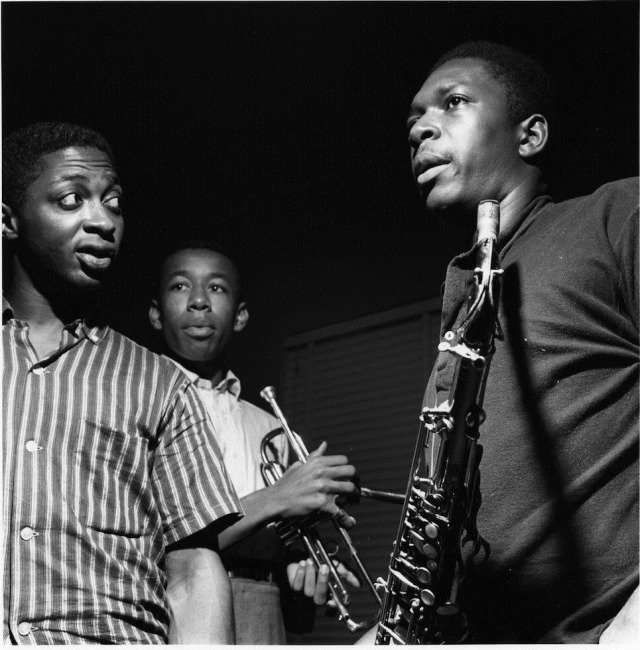
Legends section…
Curtis Fuller, Lee Morgan & John Coltrane
[Playlist] A Collection of Jazz from Haruki Murakami’s ‘Norwegian Wood’
MUSIC MONDAY: “A Love Supreme” - The Best of Sacred Jazz (LISTEN)
MUSIC MONDAY: “A Love Supreme” – The Best of Sacred Jazz (LISTEN)
by Marlon West (FB: marlon.west1 Twitter: @marlonw IG: stlmarlonwest Spotify: marlonwest)
It’s Music Monday! In celebration of Easter and #JazzAppreciationMonth, here is a collection of Sacred Jazz.
When jazz emerged in the first half of the 20th century as music of liberation, entertainment and modernism, it provoked a backlash among cultural and religious-establishment figures.
Many of them…

MUSIC MONDAY: “Ear Food” - A New Jazz Playlist (LISTEN)
MUSIC MONDAY: “Ear Food” – A New Jazz Playlist (LISTEN)
by Marlon West (FB: marlon.west1 Twitter: @marlonw IG: stlmarlonwest Spotify: marlonwest)
Happy #JazzAppreciationMonth, good people! For most the word “Jazz” conjures up images of the giants like Charlie Parker, Ella Fitzgerald, John Coltrane, Miles Davis, Sarah Vaughan, and Louis Armstrong.
Though this collection, “Ear Food: A New Jazz Playlist“ features a new school of Jazz artists re-imagining…

“My music is the spiritual expression of what I am — my faith, my knowledge, my being…When you begin to see the possibilities of music, you desire to do something really good for people, to help humanity free itself from its hangups…I want to speak to their souls.” - John Coltrane
Post link

